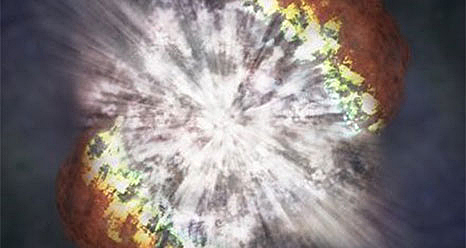
Credits: NASA
When stars run out of fuels, they collapse under their own gravity. This collapse causes a bright explosion that lasts for a few weeks. The resulting supernova is brighter that its host galaxy. Due to its brightness, a supernova can be detected in distant galaxies and help us study the large-scale structure of the universe.
Recently, astronomers had the opportunity to capture the very first minutes of such an explosion and detect the shockwave that was generated during this extraordinary phenomenon. The observation will help scientists to understand how the size and composition of the dying star affects the early moments of their death.
The protagonists of the event were two old stars. The shockwave was observed only in the smaller star that has a radius 270 times that of the Sun. The larger star, with radius 460 times that of the Sun, was too large for the shockwave to travel all the way to the surface. The shockwave is generated by the energy that is released as the star collapses and is responsible for the creation of many of the heavy elements that we need to survive, such as iron and zinc. Therefore, when we study these supernovae explosions we basically study how we are created, as astronomer Brad Tucker, one of the scientists that detected the explosion, said.
Source: astronomy.com
